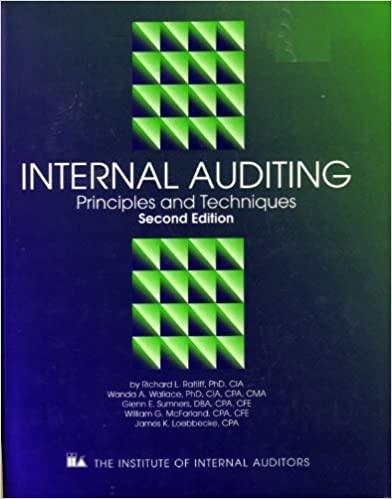Answered step by step
Verified Expert Solution
Question
1 Approved Answer
Determining business rationale and whether to consolidate a VIE; intra - entity sales ( deg LO 1 7 - 5 , deg LO
Determining business rationale and whether to consolidate a VIE; intraentity sales deg LO deg LO Determining business rationale and whether to consolidate a VIE; intraentity sales LO LO
Papa John's International, Inc., operates and franchises pizza delivery and carryout restaurants in domestic and global markets. Papa
John's disclosed the following relationship with a variable interest entity VIE:
Through February we had a purchasing arrangement with BIBP, a specialpurpose entity formed at the direction of our Franchise
Advisory Council, for the sole purpose of reducing cheese price volatility to domestic systemwide restaurants. BIRP was an independent,
franchiseeowned corporation. BIBP purchased cheese at the market price and sold it to our distribution subsidiary, PJ Food Service, Inc.
PJFS at a fixed price. PJFS in turn sold cheese to Papa John's restaurants both Companyowned and franchised at a set price. PJFS
purchased $ million of cheese for the three months ended March and $ million of cheese during from BIBP.
Source: Papa John's International. Inc.. Form K for the year ended December
Required:
Discuss the primary business rationale for Papa John's purchasing arrangement with BIBP.
What criteria did Papa John's use to determine if it should consolidate BIBP in its financial statements?
Assuming that Papa John's consolidated BIBP, how were the intraentity sales described above accounted for in the consolidation process?
Papa John's International, Inc., operates and franchises pizza delivery and carryout restaurants in domestic and global markets. Papa
John's disclosed the following relationship with a variable interest entity VIE:
Through February we had a purchasing arrangement with BIRP, a specialpurpose entity formed at the direction of our Franchise Advisory Council, for the sole purpose of reducing cheese price volatility to domestic systemwide restaurants. BIBP was an independent, franchiseeowned corporation. BIBP purchased cheese at the market price and sold it to our distribution subsidiary, PJ Food Service, Inc.
PJFS at a fixed price. PJES in turn sold cheese to Papa John's restaurants both Companyowned and franchised at a set price. PJFS purchased $ million of cheese for the three months ended March and $ million of cheese during from BIBP.
Source: Papa John's International, Inc. Form K for the year ended December
Required:
Page
Discuss the primary business rationale for Papa John's purchasing arrangement with BIBP.
What criteria did Papa John's use to determine if it should consolidate BIBP in its financial statements?
Assuming that Papa John's consolidated BIBP, how were the intraentity sales described above accounted for in the consolidation process?

Step by Step Solution
There are 3 Steps involved in it
Step: 1

Get Instant Access to Expert-Tailored Solutions
See step-by-step solutions with expert insights and AI powered tools for academic success
Step: 2

Step: 3

Ace Your Homework with AI
Get the answers you need in no time with our AI-driven, step-by-step assistance
Get Started


